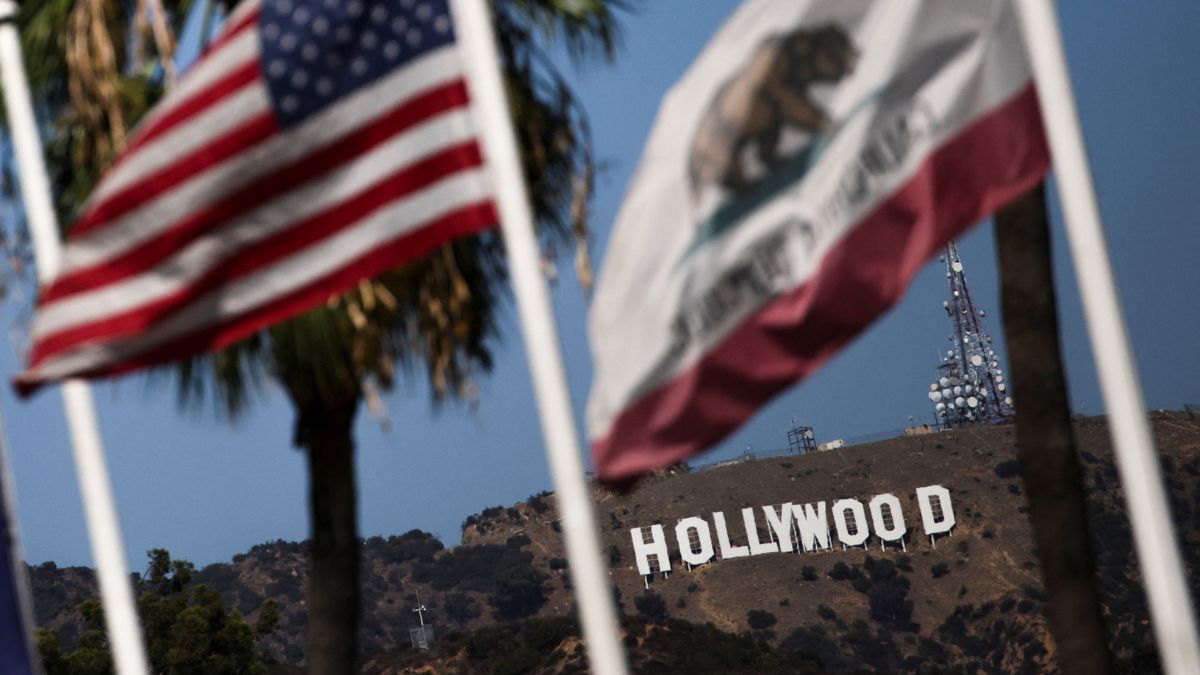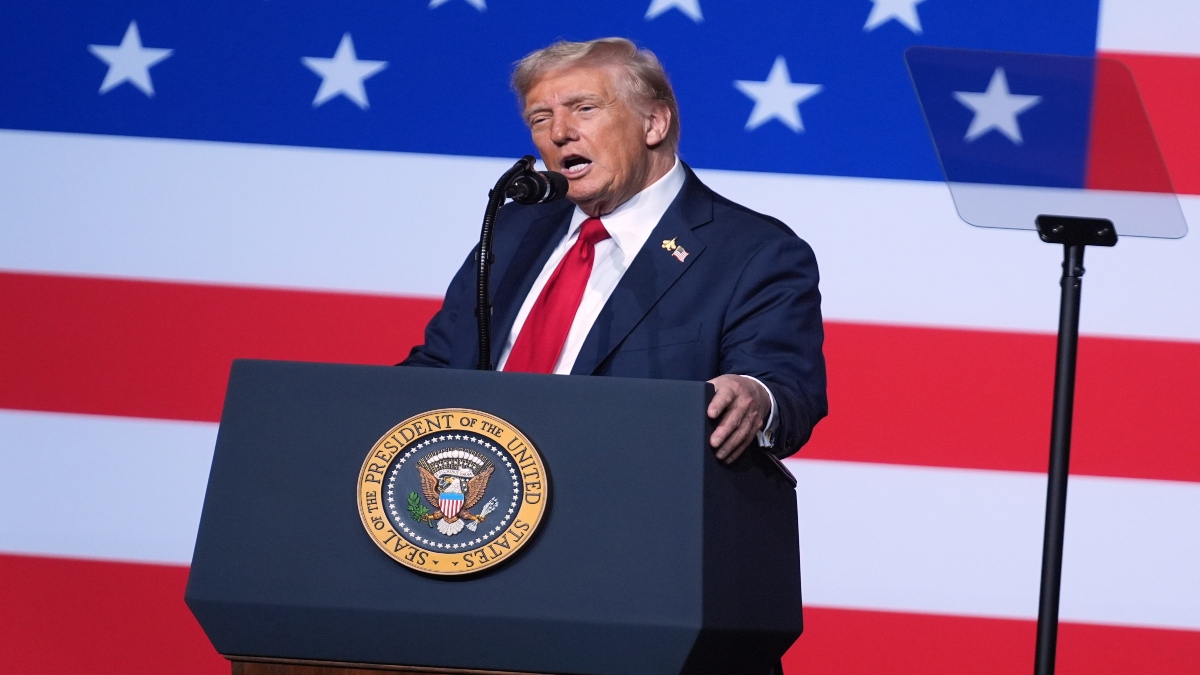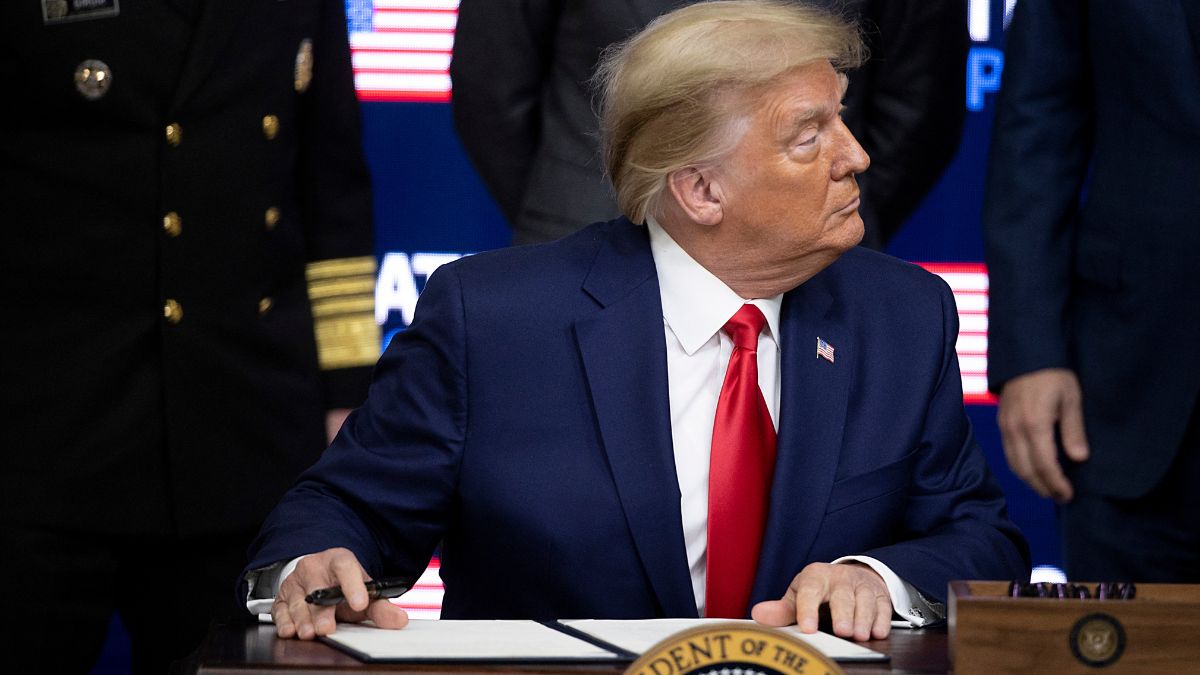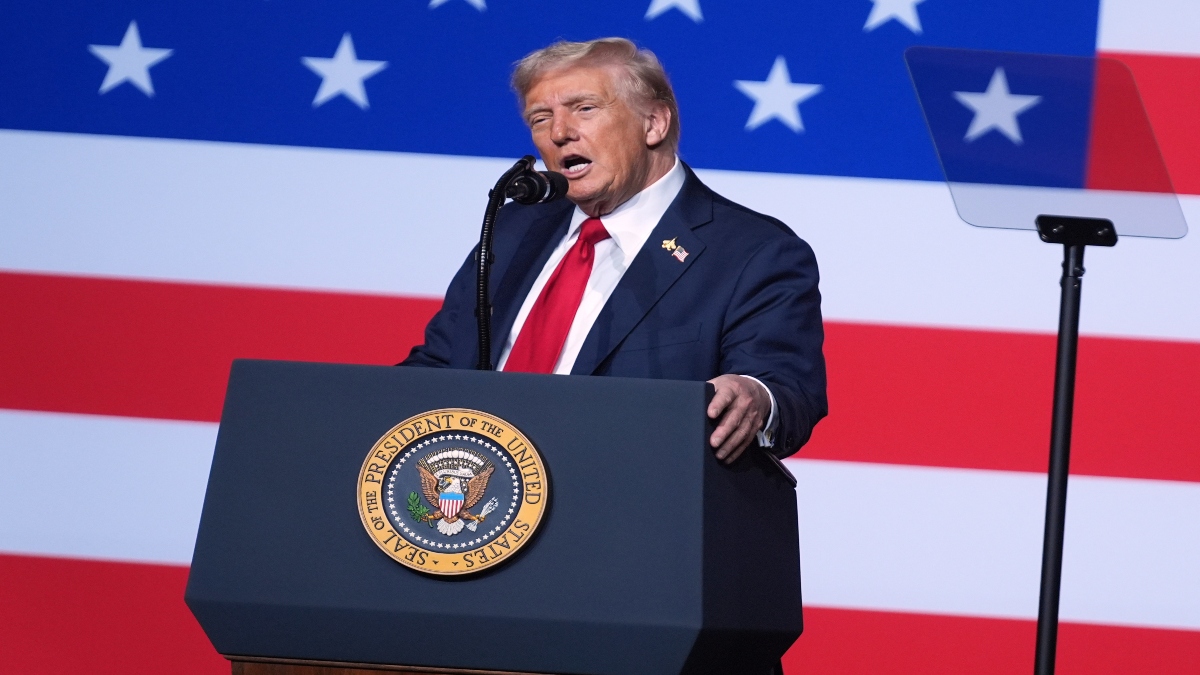Donald Trump has again threatened to slap 100 per cent tariffs on movies made outside the United States. He claimed on his Truth Social platform on Monday (September 29) that movie production “has been stolen’’ from Hollywood and the US.
“California, with its weak and incompetent Governor, has been particularly hard hit! Therefore, in order to solve this long time, never ending problem, I will be imposing a 100 per cent Tariff on any and all movies that are made outside of the United States,” his post read.
While details remain unclear, Trump’s steep tariffs can have an impact on Indian cinema, Hollywood and movies around the world.
Let’s take a closer look.
What Trump’s movie tariffs mean
Trump’s plan to impose 100 per cent tariffs on “any or all movies” that are made outside America will be the first time a US levy will be implemented on cross-border delivery of services.
“Our movie-making business has been stolen from the United States of America, by other countries, just like stealing “candy from a baby,’’ Trump wrote on his Truth Social.
However, it would not be easy to put tariffs on foreign-made films.
Modern filmmaking is mostly digital and shooting is done at locations across countries. Moreover, much of the production work is done online.
“We live in a world where movies are made across locations, across countries. A Hollywood animated movie could outsource special effects to a studio in India, but the colour correction could be done in another country and audio-video in a third. It is very complicated and there are many intangibles," George Koshy, CEO of Infamous Coconut, an LA-based production company, told Times of India (TOI).
Film theatres usually used 35mm film prints that were physically transported to theatres and screened using projectors, as per an Indian Express report.
However, traditional projectors have now been replaced by digital cinema packages across many screens. Due to this, theatrical distribution of films worldwide is now a digitally delivered service. Hence, experts said, the US tariffs on foreign-made movies will be treated as a digitally delivered service.
Impact Shorts
More ShortsStreaming has changed the media landscape. People are increasingly choosing to watch content on their electronic devices rather than going to movie theatres. US-based digital platforms like Netflix, Amazon Prime, and Disney are dominating the field. Trump’s steep tariffs are likely to bring turmoil for these global streaming giants.
Impact on India
The presence of the Indian diaspora in the US and Canada has grown significantly, making North America a big market for Indian language movies.
According to the Producers Guild of India, Indian films earn an estimated $100 million (Rs 887.96 crore) to $150 million (approximately Rs 1,332 crore) every year in North America. This revenue is from box office collections, digital, satellite, and other distribution rights sold in the US.
Many Hindi and Telugu superhits have collected more than $10 million from the US market. Major Indian movies that earned well in the US include: Baahubali 2 ($22 million or about Rs 195 crore), followed by Kalki 2898 AD Pathaan, RRR, Pushpa 2, Jawan, and Animal, which grossed between $15–19 million (Rs 133-169 crore) each.
If producers decide to pass on the tax burden to consumers, the ticket prices would see a hike, further dissuading people from going to the cinema halls.
In such a case, the American consumer would have to pay twice the current $20 (Rs 1,776) for tickets and higher prices for subscription services. This could hurt the demand, forcing producers to compromise.
As per trade analyst Suniel Wadhwa’s estimate, a price hike could cut Indian films’ US revenues by 30 to 40 per cent, reported Business Standard.
Trade expert Sreedhar Pillai told India Today: “What the distributors are saying is that, for example… you have bought a film for Rs 5 crore to screen in the US, then you will have to end up giving Rs 10 crore. And suppose the average price of a ticket in the US is $10-15 right now, that will be increased to around $20-30 — straight double.”
Speaking to N_DTV_, National Award-winning filmmaker Pan Nalin said that the American movie business is far from “stolen”. “I do not agree with President Trump; the American movie business has not been stolen, and going by the trend in the first nine months of 2025, it has never been so robust since the pandemic. Just look at Warner Brothers - their second-quarter revenues increased modestly from last year to Rs 869 crore ($9.8 billion).”
Nalin warned that the proposed tariffs would not have a significant impact on Indian films. “Only about two per cent to four per cent of India-produced films are released theatrically in the USA, usually those with big stars. These films are mainly screened in areas with a large Indian diaspora population. Instead of Rs 709 ($8) to Rs 887 ($10) tickets, audiences may end up paying Rs 1,419 ($16) to Rs 1,774 ($20). But beyond the Indian and South Asian diaspora, the business for Indian films in America is almost negligible.”
India could also bear the brunt of Trump’s tariffs if Hollywood studios like Disney, DreamWorks, and Pixar, which outsource a major part of the animation and visual effects (VFX) execution to Indian studios, halt the process.
Animation studios in India are also making and co-producing TV shows and feature films for international giants Disney and Nickelodeon. India’s animation and VFX sector is expected to increase from $1.3 billion in 2023 to $2.2 billion by 2026, TOI reported, citing CII and India Brand Equity Foundation.
Trump had first indicated imposing tariffs on foreign films in May.
“Under such a high tariff regime, all channels of movie showing and viewing will be impacted and become more costly. It will overall increase the cost of content consumption for the Indian diaspora,” Ashish Kulkarni, an animation and visual effects industry expert and founder of a production house, told The Hindu at the time.
Impact of US tariffs on Hollywood
Hollywood will also be singed by Trump’s 100 per cent tariffs on foreign-made movies. Post-pandemic, making a movie or TV series in the US has become more costly.
The 2023 strikes of writers and actors have reformed how creatives are paid in the new streaming economy. Many filmmakers are opting to shoot outside the US, especially in countries like Canada and Australia, which offer incentives. These sites outside America are also attractive as they provide cheaper labour and even healthcare.
If Trump goes ahead with his tariff threat, experts warn that other countries could also retaliate.
A May research report titled Tariffs on Movies: Lack of Clarity on Implementation Design and Economic Motivation by Pritam Banerjee, head & professor, Centre for WTO Studies, said that tariffs on movies could lead to similar steps globally.
“If one accepts the principle that tariffs can be applied on digitally delivered services in contravention of existing multilateral or bilateral commitments, it can lead to other countries taking up similar measures for reasons of revenue maximisation or for protecting their domestic industry,” Banerjee wrote in the report.
Experts said that tariffs on films violate binding US multilateral commitments under the General Agreement on Trade in Services (GATS).
The US has promised to give market access and national treatment to cross-border delivery of audio-visual services (covering Motion Picture & Video Tape Production & Distribution Services, Radio & Television Services, Radio & Television Transmission Services, and Other Audiovisual Services) in the GATS, as per Indian Express.
This means it has to allow commercial streaming of foreign content without discrimination vis-à-vis domestic content. Any tax, or tariff, on foreign content would be discriminatory and violate the US’ existing GATS commitments.
Trump’s threat raises more questions than answers.
“Since movies aren’t goods, they’re services, it remains unclear how a tariff could be placed on a service, but should some logistical loophole be found and enforced, it’ll cause chaos within the entertainment industry,” Mike Proulx, vice president and research director at Forrester, was quoted as saying by CNBC. “Then the question becomes what’s next? Where’s the line between a movie and a limited time series? What about the ad industry that saves money by shooting commercials outside the US?”
The question about how Trump plans to tariff movies remains and whether it will actually bring production back to Hollywood.
With inputs from agencies


)

)
)
)
)
)
)
)
)



